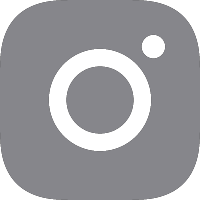If you want to make paid ads jealous, build a seasonal content calendar that nudges customers back to your Shopify store—predictably, cheaply, and with way less caffeine-fueled panic. I’ve run these calendars for brands that swapped part of their ad budget for blog posts, gift guides, and timely emails—and saw repeat orders climb while CPCs stayed on a diet. ⏱️ 10-min read
This guide walks you through practical goals, calendar structure, SEO tactics, distribution workflows, and a 4-week sprint to launch. Think of it as a playbook for turning seasonal interest into habitual reorders—without sounding like a pushy salesperson or an SEO robot on a caffeine bender.
Seasonal goals that tie content to repeat purchases
Start with concrete targets, not vibes. Break your year into four seasonal clusters—spring, summer, fall, and holidays—and set a crisp repeat-purchase goal for each. For example: Spring = +5% refill orders for weekly staples; Summer = +4% travel-size add-ons; Fall = +6% bundled replenishments; Holidays = +7% pre-gift reorders and loyalty sign-ups. Yes, the numbers sound boring—good. Boring numbers let you act.
Track three KPIs as your north star: repeat rate (customers who purchase again within your chosen window), replenishment orders, and customer lifetime value (LTV). Compare each season to the previous year and aim for modest, realistic lifts—3–7% YoY is a smart place to start. If you chase fireworks, you’ll probably get smoke.
Map content to funnel stages. Awareness content (seasonal blog posts, Pinterest boards) brings in new visitors searching for “spring skincare routine” or “summer travel kit.” Consideration content (how-tos, comparisons) nudges them toward a second purchase. Post-purchase content (care guides, loyalty invites, reorder reminders) locks in repeat behavior. Tie each piece of content to a product pathway—bundle pages, refill subscriptions, or in-cart upsells—so someone who read a “how-to” ends up with an obvious next step.
Connect seasonal themes to products and promotions
Seasonal themes should feel inevitable, not contrived. Pair each season with core SKUs and replenishment items: spring basics and refills, summer sun-care and travel minis, fall bundling for cozy routines, and holiday giftable kits that prompt future refills. Build offers around clear value—bundle a frequently replaced item with a complementary product and call it a “seasonal essentials pack.” Customers respond to obvious value; they ignore cleverness that doesn’t help them.
Design the visuals and copy to match the season and product mood—color palette, lifestyle photography, and short, concrete copy (“replenish weekly staples,” not “treat yourself”). Use social proof heavily: customer photos, star ratings, and short testimonials on seasonal landing pages. UGC calms skepticism faster than any discount code can—people trust people, not buzzwords.
Use restock announcements and loyalty bonuses to create urgency and reward repeat buyers. For example: early access to holiday bundles for double-point loyalty members, or a “restock alert” email for subscribers. Coordinate banners, email subject lines, and in-cart prompts so the message is consistent across touchpoints. When everything sings the same tune, even skeptical customers start tapping their feet.
Build a calendar that supports a repeat-purchase funnel
Think in pillars, not one-off posts. Name 3–4 seasonal pillars—Spring Refresh, Summer Essentials, Back-to-School, Holiday Prep—and set clear date windows for each (start, peak promo days, and wind-down). Put everything in a shared calendar that the team actually uses; Trello, Notion, or your Shopify marketing calendar work fine—no poster-board mystique required.
Weekly structure keeps work predictable. I use a simple 4-week rhythm for each pillar: Week 1 = education (how-to guide), Week 2 = practical tips (checklists, hacks), Week 3 = stories and social proof (customer spotlights), Week 4 = recap + teaser for the next pillar. That cadence feeds email flows, social snippets, and short videos without reinventing the creative wheel every week.
Tie calendar weeks to automation. For replenishment-focused pillars, trigger reminders 7–10 days before an expected refill date and resend if no purchase occurs. Segment your audience by repeat history and tailor the tone—new buyers get friendly education; repeat buyers get “you’re almost out” nudges full of convenience. This reduces noise and keeps messages relevant, not annoying (because nobody likes being nagged—except my houseplants).
Topic ideas and formats that convert without heavy ads
Content that converts looks less like advertising and more like helpful shopping assistance. Favor buyer-focused formats: gift guides, product comparisons, how-to tutorials, and customer spotlights. These formats match search intent and make the path to purchase obvious. A “Best Travel Kits for Weekend Getaways” guide with embedded bundles will convert better than a generic promo that screams “BUY NOW” at strangers.
Practical formats that work: step-by-step tutorials, “best for” lists, printable checklists, quick care routines, and short case stories featuring real customers. Use comparison posts to reduce decision friction—side-by-side pros/cons and a recommended bundle for each profile (e.g., “For beach lovers: SPF + after-sun mist + travel pouch”). Think of these as matchmaking content for products and seasonal needs.
Long-tail keywords matter here; instead of chasing “sunscreen,” optimize for “best reef-safe SPF for travel 2025” or “how to pack skincare for a 3-day beach trip.” These phrases bring higher purchase intent and lower CPC in paid channels (if you use them) and better organic conversion. Tools like Google Trends and keyword planners help identify seasonal surges so you publish just in time—like a helpful friend who actually remembers your birthday.
SEO and seasonal keyword strategy for Shopify blogs
Seasonal SEO is a calendar, not a campaign. Map monthly keyword clusters that match your season pillars: January = winter basics, March = spring refresh, June = summer essentials, September = back-to-school. For each month, pick 3–5 core terms and 5–10 long-tail variations; align blog posts, FAQs, and product pages to these clusters so searchers find consistent answers across your site.
Optimize product and collection pages with seasonal terms in titles, meta descriptions, image alt text, and banners. Update collection descriptions to reflect seasonal benefits—“summer outdoor essentials” or “winter hydration kits.” Implement FAQ schema on blog posts and product pages to capture SERP real estate and voice-search queries. Google rewards clarity; vagueness gets you buried between two recipe blogs and an uninspired listicle.
Internal linking is your funnel’s secret sauce. Use a hub-and-spoke model: a seasonal pillar page links to detailed how-tos and product pages, and those product pages link back to the pillar. Anchor text should mirror search intent—link “spring skincare refill” directly to the refill subscription or bundle page. If you’re curious about SEO essentials, Moz and Google’s SEO Starter Guide are good reads: https://moz.com/learn/seo/what-is-seo and https://developers.google.com/search/docs/beginner/seo-starter-guide.
Distribution, automation, and omnichannel promotion
Publishing a great post is only half the battle; distribution decides whether it drives repeat purchases. Automate the heavy lifting—tools like Trafficontent can template posts, publish to your Shopify blog, and push content to Pinterest, X, and LinkedIn. Multilingual versions and auto-tagging save time if you sell internationally. Think of automation as your content intern who never needs coffee breaks.
Coordinate email, SMS, and push notifications. Welcome sequences should highlight seasonal favorites and top sellers. Post-purchase flows confirm orders, provide care tips, and invite reviews. Replenishment reminders should be calendar-aware—timed so customers receive nudges before they run out. Use SMS sparingly: short, punchy messages with a direct link work best. Nobody enjoys a ping every day; unless it’s a package delivery, then yes, ping me like a lighthouse.
Use UTM tagging and dynamic retargeting for measurement. Tag seasonal campaigns and content so you can trace incremental revenue. Run retargeting during peak windows with dynamic product ads (Facebook/Meta, Google) showing items that were viewed or added to cart. Schedule campaigns ahead of holidays and align creative with the organic content funnel—consistency across channels increases conversions and reduces cognitive whiplash for shoppers.
Measuring ROI: is seasonal content beating ads?
Show me the receipts. Track repeat rate, LTV, CAC, and revenue per season. Define a season window (quarter or custom range) and compare to off-season baselines. Use multi-touch attribution and GA4’s last non-direct touch to understand how content, pins, and emails collectively contribute to purchases. Spoiler: people rarely buy on their first visit—so single-touch attribution is as useful as a chocolate teapot.
Use UTM tags from content distribution tools to connect posts to revenue. If you’re using Trafficontent, tag content to align with GA4 event data. Run A/B tests on formats (how-to vs. gift guide) and CTAs (Shop now vs. Learn more) during peak weeks and record which combinations yield better add-to-cart rates and orders per visitor. Consider a holdout test—exclude a customer segment from seasonal emails or pins to isolate the incremental impact of your content. Yes, it’s slightly evil, but very illuminating.
Compare content-driven ROAS to PPC campaigns over 12 months. Content investments compound—evergreen posts keep delivering—while paid ads stop the moment you cut the budget. If content-driven CAC is lower and LTV rises, reallocate budgets accordingly. Data beats bravado; let numbers be your gym coach, not your hype man.
Repurposing and evergreen content for sustained ROI
Treat your best seasonal posts like perennial instruments in an orchestra. Repurpose high-performing guides into email sequences, short videos, social carousels, and product page modules. A single “how-to” can spawn a 4-part email series, 3 short clips, and a carousel of UGC—like turning a loaf of sourdough into toast, breadcrumbs, and very smug brunch photos.
Refresh top seasonal posts annually: update offers, pricing, and imagery; add fresh testimonials; and re-run SEO checks. Keep evergreen pillars—size guides, care instructions, foundational how-tos—alive with quarterly updates. If a post underperforms, archive or repurpose it; not every piece deserves to live forever. Prune the garden so the roses get sunlight.
Create a living case study from one evergreen guide. Update it quarterly with new stats, screenshots, and customer quotes. Use it as a sales and email asset to build credibility without continuously inventing hero content. Set a review cadence—quarterly for evergreen refreshes, annual updates for seasonal posts—so your calendar doesn’t look like a neglected plant corner.
4-week sprint: fast-start playbook for your seasonal calendar
Want to launch a functional seasonal calendar fast? Here’s a 4-week sprint I’ve used with small teams. Week 1: audit and decide. Pull last year’s analytics, list top seasonal SKUs, and choose 3–4 seasonal pillars. Set clear goals (repeat-rate lift, revenue targets) and put dates in a shared calendar.
- Week 1 - Audit & Goals: Identify top SKUs, past seasonal performance, current inventory windows. Set repeat-purchase targets for each pillar.
- Week 2 - Topics & Assets: Draft 8–12 blog topics tied to pillars, assign authors/creatives, and collect UGC. Create templates for post layouts and email sequences.
- Week 3 - Production & SEO: Write and optimize posts (long-tail keywords, FAQ schema), build pillar pages, and design banners. Set UTMs and schedule social snippets via your distribution tool.
- Week 4 - Launch & Monitor: Publish, trigger email flows, and start retargeting campaigns. Monitor early signals—CTR, add-to-cart rates, and initial revenue. Adjust CTAs and creative based on week-one results.
Set up dashboards in GA4 and Shopify to track repeat rate, revenue per visit, and campaign-level ROAS. Use a 30–90 day lookback to monitor momentum—content compounds slowly, unlike ad spikes. If something moves the needle, double down; if not, iterate. Quick, messy experiments beat perfect inertia every time.
Next step: pick one seasonal pillar, draft three search-friendly post titles, and schedule one blog post plus an email flow for the coming week. If you want, I’ll help you brainstorm titles and CTAs—think of me as your caffeinated content co-pilot.
References: Shopify (https://www.shopify.com/), Google Trends (https://trends.google.com/), Moz SEO Guide (https://moz.com/learn/seo/what-is-seo).












